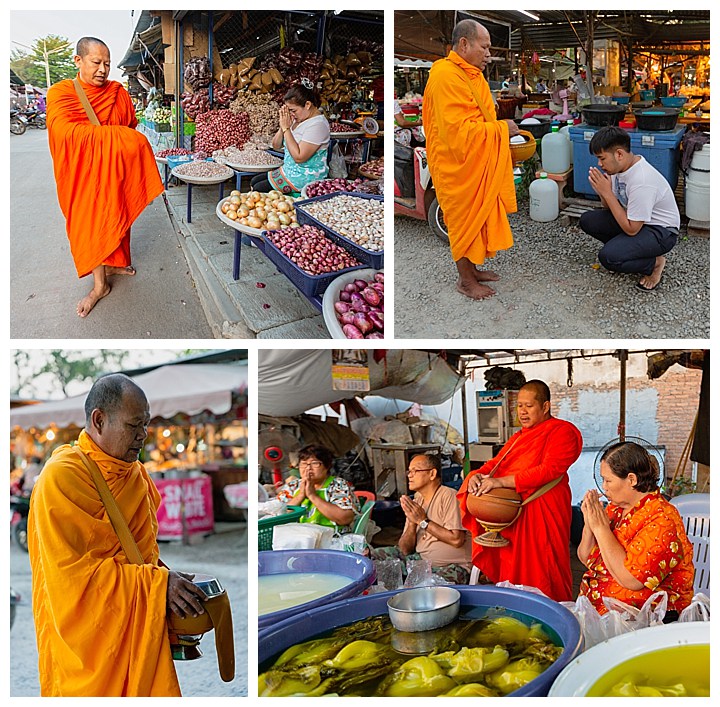
Now that we have left Bangkok, we will be spending the next two weeks exploring some off-the-beaten tracks of Northern Thailand. Places where few tourists travel, and where English is often not spoken — which is why we like having a bilingual guide with us to navigate the hotels, restaurants, markets and general interaction with the locals.
Our first stop is in Sukhothai, a rural city north of Bangkok. There was a morning market a couple blocks away from our hotel, so we headed there at 6:30AM to check it out. One of the scenes we saw repeated were Buddhist monks traveling from their temples to the markets at dawn, where they were offered food and alms by the local people. Many vendors would put some of their food in the monk’s pot, which would then be followed by the monk offering blessings in exchange.
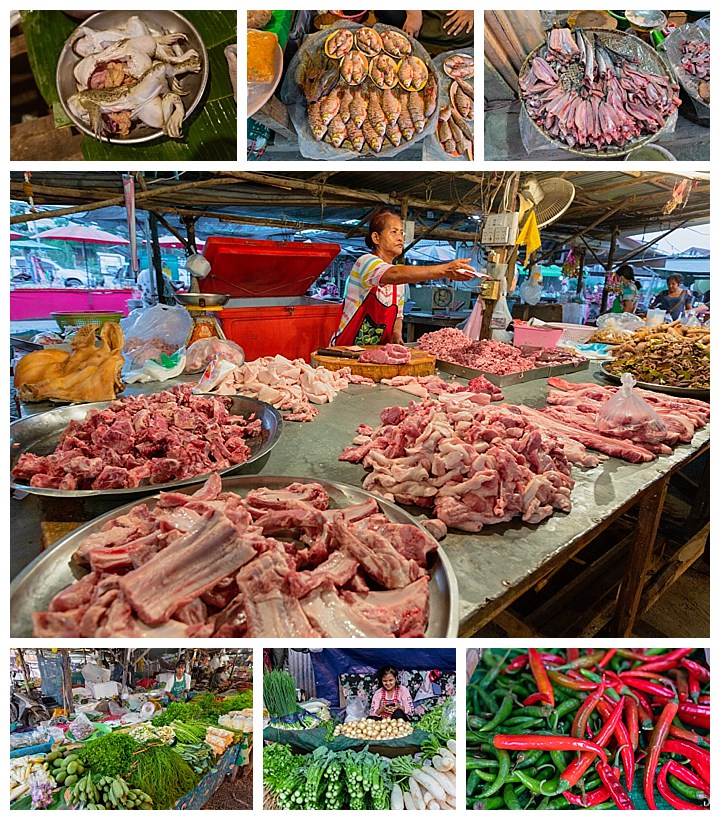
This was primarily a food market, where locals would come and buy food to cook for meals that day. Fresh seafood, frogs, beef, pork, chicken and many types of fruits and vegetables were all available in abundance.
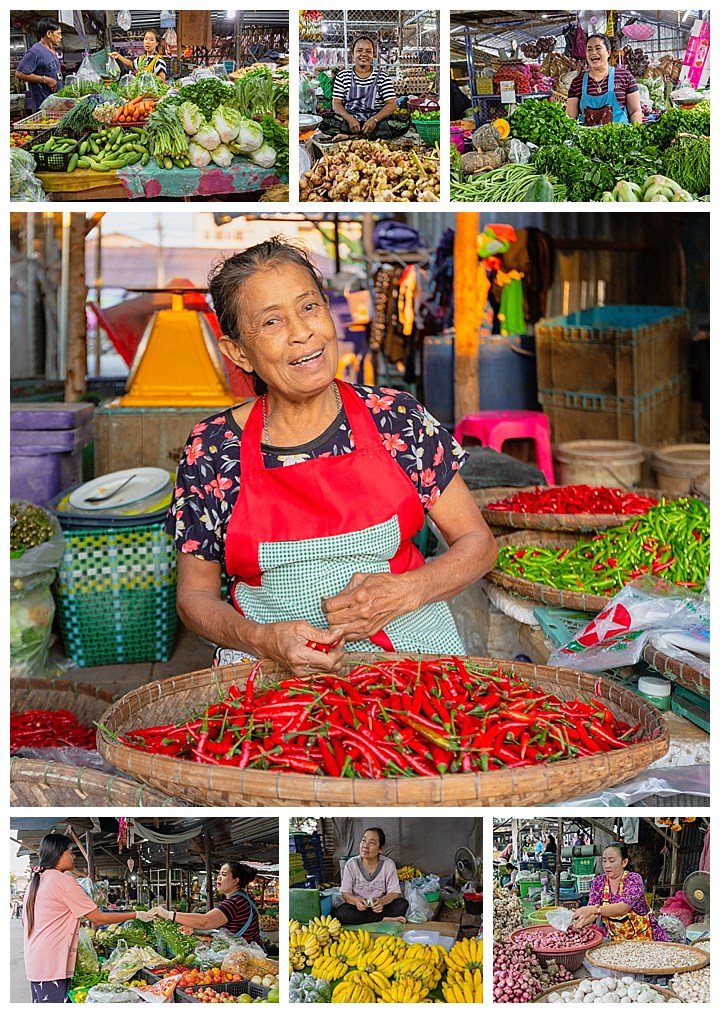
We particularly enjoy watching and interacting with the vendors at markets such as this. A quick smile and perhaps a pantomime action or two is usually all the communication needed.
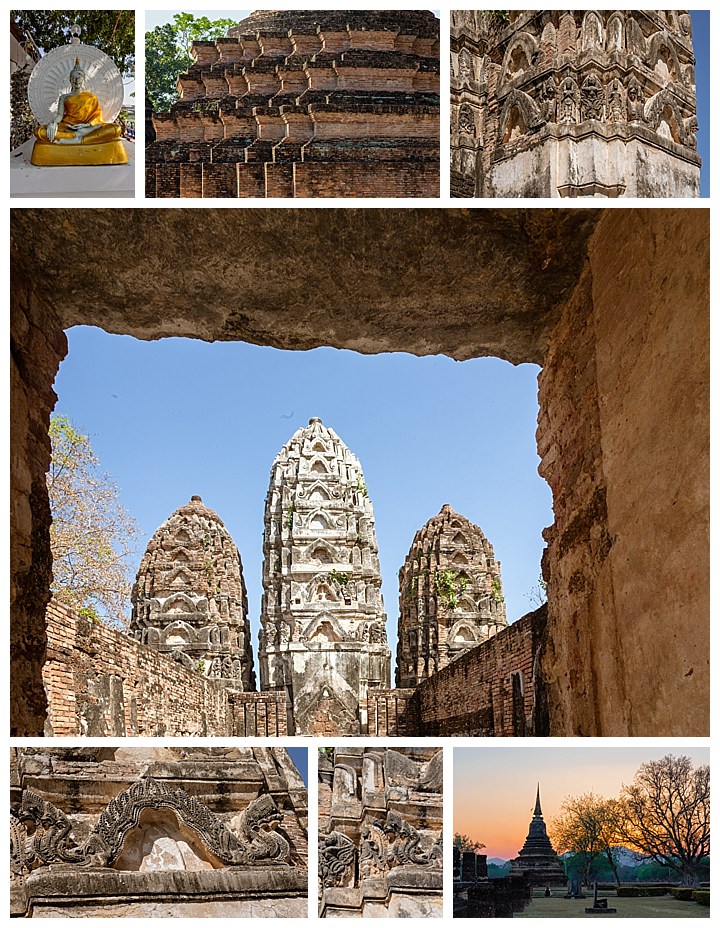
The Sukhothai Historic Park was designated a UNESCO site in 2003. It contains ruins from the 13th and 14th centuries and consists of 193 ruins over an area of 70 square kilometers (28 square miles).
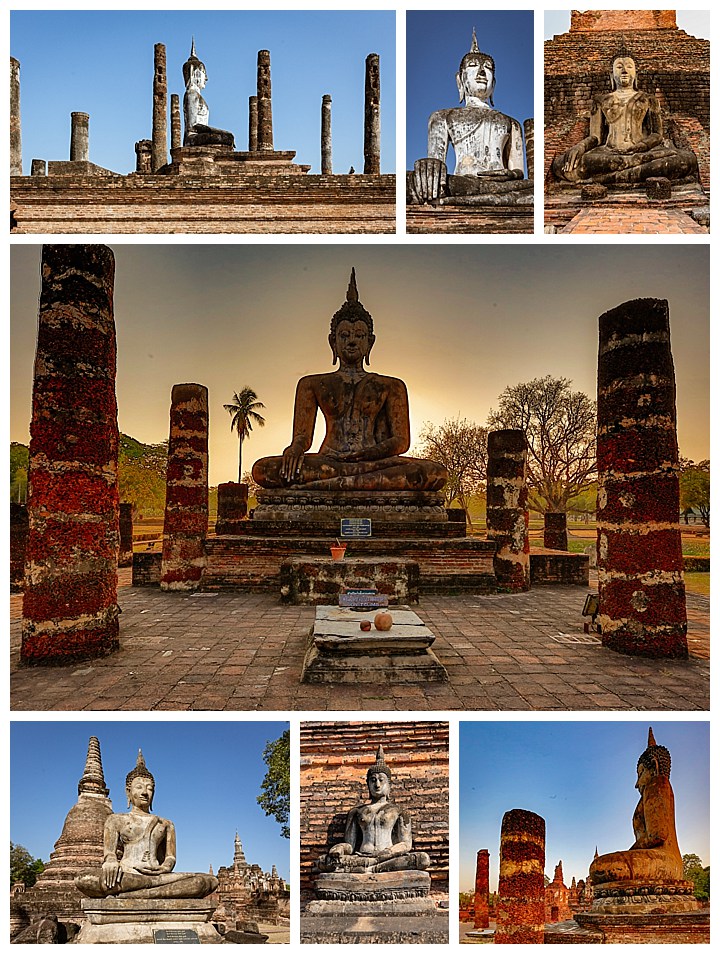
There are Buddhas at every turn, and in every size from 1 foot to 50 feet tall. We went here early in the morning and again for sunset, looking for some great light.
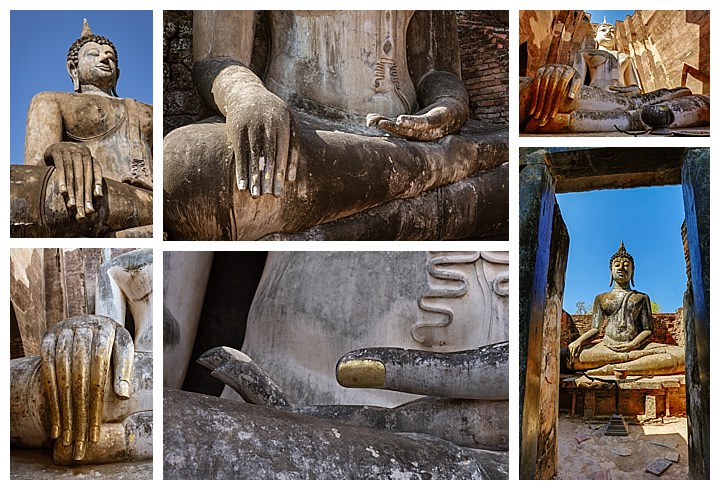
Each collection of Buddhas is actually a separate Wat (or temple) from the 13th and 14th centuries. Wat Is Chum was built in the late 14th century, and includes a massive Buddha statue with peculiarly elongated fingers. This statue stands 15 meters high (50 feet) and 11 meters wide (35 feet).